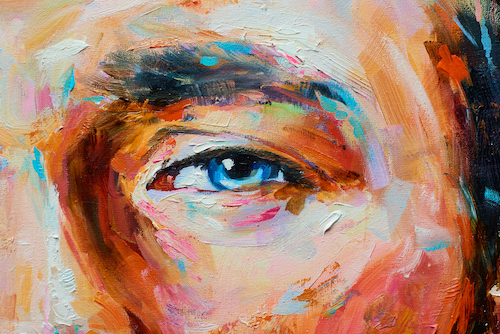Explore Classic Art Pieces Oil Paintings for Sale Today
Checking out All Regarding Oil Paintings: A Guide to Understanding Their Beauty and Worth
Oil paints have mesmerized audiences for centuries, offering a glance right into the creative mastery of numerous periods. Their abundant background is intertwined with innovative strategies and extensive emotional expression. Recognizing the products and techniques behind these artworks can enhance recognition. Additionally, the marketplace for oil paints presents possibilities for enthusiasts and financiers alike. As one discovers this interesting globe, the concern occurs: what makes an oil paint really valuable?
The Background of Oil Painting: A Trip With Time
Although oil painting has roots that go back to ancient times, it truly grew during the Renaissance, when musicians discovered its adaptability and abundant color capacity. Early instances can be traced to the 7th century, with strategies developing especially across cultures. The tool became prominent in Northern Europe in the 15th century, especially via the works of musicians like Jan van Eyck, who originated its usage for in-depth realism and lively tones. This period marked a departure from tempera paints, enabling for higher deepness and texture. As oil painting spread, it affected many musicians, causing masterpieces by renowned figures such as Leonardo da Vinci and Rembrandt. The tool's heritage continues, shaping the art world well right into modern-day times.
Comprehending Oil Repaints: Materials and Techniques
As musicians discover the globe of oil paints, they encounter a diverse variety of products and strategies that define this medium. The primary elements of oil paint include pigments, which offer color, and drying oils, such as linseed, that bind the pigments and facilitate application. Numerous ingredients can change the paint's appearance and drying out time, boosting flexibility. Techniques like glazing, where transparent layers are developed, and impasto, which involves applying thick paint, enable for various aesthetic impacts. Furthermore, using brushes, combination blades, and also fingers can produce one-of-a-kind textures and coatings. Understanding these strategies and products makes it possible for artists to completely reveal their creative thinking and attain the preferred effect in their artwork.
The Function of Shade in Oil Paints
Color plays a pivotal duty in oil paints, influencing both visual allure and psychological resonance. Understanding shade concept basics, consisting of the partnerships between tones, can improve an artist's capacity to communicate mood and environment. Furthermore, mastering shade mixing strategies enables higher depth and splendor in a painting's scheme.

Shade Concept Essential
Recognizing shade concept is crucial for musicians collaborating with oil paints, as it creates the structure for producing harmonious and visually interesting structures. Color theory incorporates the research of just how colors interact, the shade wheel, and the relationships between primary, additional, and tertiary shades. Artists utilize corresponding colors to boost contrasts and create centerpieces, while analogous shades promote unity and cohesiveness within an item. Additionally, the principles of awesome and cozy colors influence the assumption of depth and room in a paint. Comprehending these principles permits artists to adjust color efficiently, leading the customer's eye and communicating their desired message. Mastery of shade concept inevitably enriches a musician's capacity to communicate feelings and ideas through their job.
Emotional Effect of Color
The psychological impact of color in oil paints plays an important duty in how customers link and regard with art work. Colors evoke details sensations and moods, influencing the customer's emotion. For circumstances, cozy hues like reds and oranges can produce a feeling of heat and power, while awesome tones such as blues and eco-friendlies usually stimulate peace or introspection. Artists strategically choose color combinations to enhance narrative elements, directing the target market's psychological trip. The saturation and contrast of colors further amplify these effects, attracting focus and developing focus. Eventually, the interplay of colors in oil paintings not just enhances their aesthetic appeal however likewise acts as an effective tool for psychological expression, enhancing the audience's experience and interpretation.
Shade Combining Techniques
While lots of aspects of oil painting add to the general composition, mastering color blending methods is vital for accomplishing preferred impacts and deepness. Shade mixing can be approached via different approaches, consisting of the subtractive and additive procedures. Additive blending entails incorporating colors of light, while subtractive blending counts on pigments, where shades mix to create brand-new shades. Musicians usually use a restricted combination to create unified works, understanding the partnerships between key, additional, and tertiary shades. Techniques such as glazing and scumbling better improve deepness and luminance. By masterfully blending colors, an artist can stimulate feelings, produce prime focus, and achieve a feeling of realism, eventually elevating the paint's psychological and visual impact.
Famous Oil Painters and Their Iconic Functions

Well known for their proficiency of color and method, oil painters have actually developed some of one of the most popular artworks in history. Popular musicians like Vincent van Gogh captivated audiences with his stirring brushwork in "Starry Night," while Claude Monet's "Impact, Dawn" prepared for Impressionism. Leonardo da Vinci's "Mona Lisa" continues to be an enduring sign of creative brilliant, showcasing his ability in catching human expression. At the same time, Rembrandt's "The Evening Watch" shows his ingenious use of light and shadow. Various other remarkable numbers include Pablo Picasso, who revolutionized modern art with his vibrant trial and error in jobs like "Les Demoiselles d'Avignon," and Georgia O'Keeffe, whose lively representations of landscapes and blossoms assisted define American innovation. Each musician's distinct style added greatly to the oil paint landscape.
Just how to Evaluate the Quality of an Oil Paint
Assessing the top quality of an oil painting includes a cautious assessment of craftsmanship techniques, as well as an evaluation of color and make-up. Observing brushwork, layering, and the application of paint can expose the artist's ability level. In addition, the interplay of shades and the general arrangement of components contribute considerably to the paint's aesthetic worth.
Examining Craftsmanship Strategies
A precise analysis of craftsmanship strategies is essential for determining the top quality of an oil painting. Critics need to initially examine the application of paint; thick, distinctive brushstrokes might suggest an experienced hand, while extremely uniform applications might show a lack of deepness. oil paintings for sale. The layering technique is additionally crucial; the existence of glazes and varied density can enhance luminance and complexity. Additionally, the top quality of the materials made use of, such as the canvas and pigments, plays a considerable function in resilience and general aesthetic. Interest to detail in aspects like edges and shifts between colors reflects the artist's dedication to their craft. Inevitably, these techniques contribute to the paint's psychological impact and market price, serving as indicators of the musician's skill and intent
Evaluating Shade and Make-up
While reviewing the quality of an oil painting, one need to concentrate on the interaction of shade and make-up, as these elements are fundamental to the art work's total effect. Shade selections can establish and evoke feelings mood; consequently, the artist's combination must be checked out for harmony and comparison. A healthy composition routes the viewer's eye and develops a feeling of unity. Musicians frequently use techniques like the rule of thirds or leading lines to enhance aesthetic passion. In addition, the usage of light and darkness can include deepness, improving the three-dimensionality of the painting. Eventually, a successful oil painting weds shade and make-up, involving the visitor and welcoming a much deeper gratitude of the artist's vision and technique.
Taking care of and Preserving Oil Paintings
Correct care and conservation of oil paints is crucial for keeping their integrity and longevity. To safeguard these artworks, it is important to show them away from direct sunlight, which can create fading and discoloration. Maintaining a stable setting with controlled temperature and moisture additional aids in preventing damages. Cleaning up should be done delicately utilizing a soft, dry towel, staying clear of any type of severe chemicals that can hurt the paint or varnish. Regular examinations for indications of wear and tear, such as flaking or cracking, are suggested. When saving or delivering oil paintings, correct padding and framework are required to stay clear of physical harm. Ultimately, diligent care adds to the aesthetic charm and value of oil paintings with time.
The Marketplace for Oil Paintings: Investing and collecting
Recognizing the marketplace dynamics for oil paints is vital for enthusiasts and financiers alike. The worth of these art work is influenced by different variables, including the artist's track record, historic importance, and present fads. Collectors usually seek items that resonate directly while considering potential recognition in worth. Auctions and galleries work as primary venues for trading, with rates varying based on demand and rarity. Buying oil paintings calls for research into the market, as well as an understanding of authenticity and provenance. Furthermore, emerging artists may provide chances for considerable returns, while developed names can regulate high rates. On the whole, a tactical technique to accumulating can yield both aesthetic enjoyment and economic rewards.

Frequently Asked Concerns
What Are the Ecological Influences of Oil Paint Products?
The environmental impacts of oil painting materials include the release of unstable natural substances (VOCs), unsafe waste generation, and source removal for pigments. These variables contribute to pollution and ecological degradation, increasing issues among ecologically mindful artists and consumers.
Exactly How Do Different Canvases Affect Oil Painting Outcomes?
Various canvases influence oil painting results considerably. Texture, absorbency, and surface high quality can change paint application, drying times, and color vibrancy. Musicians often pick details canvases to accomplish preferred effects and enhance their imaginative expression.
Can Oil Paintings Be Recovered if Damaged?
Oil paintings can without a doubt be recovered if damaged. Professional conservators make use of different methods to repair rips, clean surfaces, and address staining, making sure that the artwork retains its initial charm and worth for future generations.
What Are the Indications of an Initial Oil Paint?
The indicators of an initial oil paint consist of noticeable brush strokes, structure variants, and an unequal canvas weave (oil paintings for sale). In addition, credibility might be verified with provenance, trademarks, and the existence of a varnish layer special to oil mediums
Exactly How Has Innovation Influenced Modern Oil Painting Techniques?
Technology has significantly influenced modern oil painting techniques by introducing electronic devices for planning, improved materials for texture and durability, and on-line platforms for sharing and marketing art, therefore broadening musicians' creative opportunities and target market reach. Oil paint has origins that date back to ancient times, it genuinely flourished during more info the Renaissance, when musicians discovered its adaptability and abundant color capacity. The psychological impact of shade in oil paints plays a crucial function in just how viewers attach and perceive with art work. While many elements of oil paint add to the overall composition, understanding color blending methods is essential for achieving desired impacts and deepness. Evaluating the top quality of an oil painting entails a cautious assessment of craftsmanship methods, as well as an evaluation of shade and structure. While assessing the quality of an oil painting, one have to concentrate on the interplay of shade and structure, as these aspects are basic to the art work's total influence.